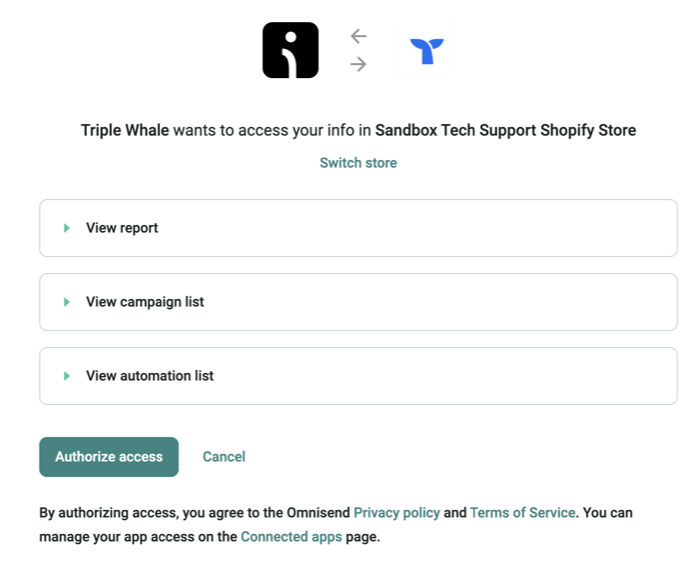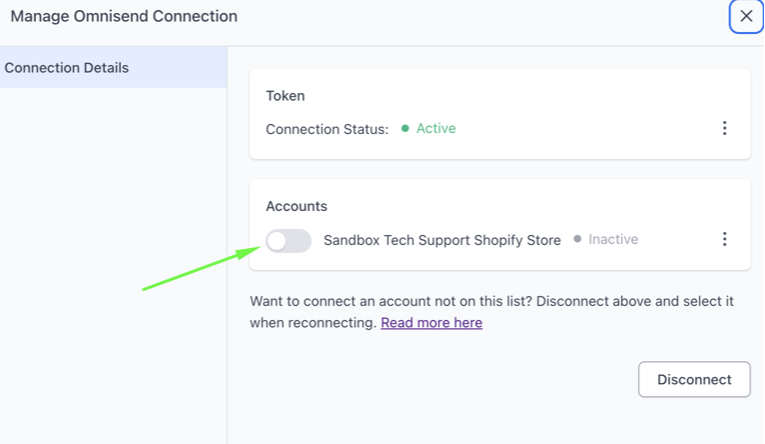Drive sales on autopilot with ecommerce-focused features
See FeaturesIf you send email and SMS through Omnisend and track performance in Triple Whale, this new integration probably makes more sense than any announcement we could write about it.
Because now, the numbers you care about – campaign revenue, flow performance, conversions, AOV – show up where you already check everything else. No more switching tabs just to compare. No more explaining where email fits in your whole marketing potpourri.
It’s all just… there. In one place.
So here’s how it works, and where it actually helps.
So, what does it actually do?
This new integration connects your Omnisend data to your Triple Whale dashboard. That’s the simplest way to put it.
When it’s set up, your campaign and automation metrics start flowing into Triple Whale. You’ll be able to see how much revenue you’re driving from email and SMS, how your flows are performing, how engaged your audience is, and how all of that compares to your paid and organic channels.
There’s no extra tool to learn. And definitely no need to manually export anything. Just open your dashboard, and it’s all there.
What you’ll see
Once connected, Triple Whale starts pulling the following from Omnisend:
- Total Revenue
- Conversions
- Campaign Revenue
- Flow Revenue
- CTR (Click-through rate)
- Sent (emails)
- Delivered
- Clicks
- Unsubscribed
- AOV (Average order value)
Data updates roughly every hour. You can customize how it appears in your dashboard – just like you would with any other tile inside Triple Whale.
It doesn’t slow anything down. It just smoothly does its job in the background.
Why this changes things
Most brands already rely on Triple Whale to monitor performance – ad spend, revenue, LTV, attribution, site behavior, and etc. However, email and SMS were somewhat set aside. You could track how your campaigns and flows were doing, but not how they played into everything else.
This fills that gap.
You can now see – in plain numbers – what your emails are doing, what your automations are contributing, and how they compare to your paid channels. You’ll stop wondering if it’s time to shift more budget to lifecycle. You’ll just know.
See what’s really happening
Once the data’s in, Moby, Triple Whale’s AI assistant, can help you make sense of it.
You don’t need to build filters or dashboards. You just ask questions – like:
- What’s the average conversion rate for my welcome flow?
- How does my abandoned cart email performance compare to industry benchmarks?
- Which email flows are contributing most to repeat purchases?
And Moby provides answers based on your data.
There are also Moby Agents running in the background. These fellas flag changes you might miss – like a campaign that suddenly starts underperforming or a drop in click-through rate that’s worth investigating.
After all, who wouldn’t want a personal analyst keeping an eye on things for you?
It’s not just about email performance
Now that everything’s in one place, you can actually see how email and SMS fit in – when they’re helping people convert, and vice versa:
- You’ll notice trends faster. With performance benchmarking and automated monitoring, it’s easier to catch things like unsubscribes going up, or a welcome flow that isn’t generating the revenue it used to.
- You’ll get clearer comparisons. See how your AOV from email compares to paid search, and whether your automations are bringing people back.
- You’ll have more context. Thanks to cross-channel revenue attribution and customer journey contribution, you’ll notice when email helped move someone closer to buying, even if another channel got the final click.
All of that – just by checking your dashboard.
Setting it up takes less time than reading this blog
Seriously – here’s what it looks like:
- Open Triple Whale and go to Data → Integrations → Omnisend
- Hit Connect

3. You’ll be sent to Omnisend to approve access

4. Flip the toggle (it’s off by default)

5. Head back to your Triple Whale dashboard and add Omnisend metrics to your tiles

6. That’s it – your dashboard will start showing Omnisend metrics soon after
Quick FAQ
Is this free?
Yes. There’s no added cost for the integration.
Does it work with all Omnisend plans?
Yes – including the free one.
What gets pulled into Triple Whale?
Campaign and flow revenue, conversions, AOV, CTR, clicks, unsubscribes, and engagement data.
Can I ask Moby questions about my data?
You can. Moby pulls from the full dataset once connected.
Can I turn it off if I want to?
Yep – just disconnect from the integrations page inside Triple Whale.
Final thoughts
Most marketers don’t need more data. They need the right data – in the right place – with as little trouble as possible.
That’s what this integration offers. A clearer overview of how your email and SMS work within your overall marketing, without the usual reporting .
You’ll spend less time gathering numbers and more time actually using them.
TABLE OF CONTENTS
TABLE OF CONTENTS


No fluff, no spam, no corporate filler. Just a friendly letter, twice a month.

 OFFER
OFFER







